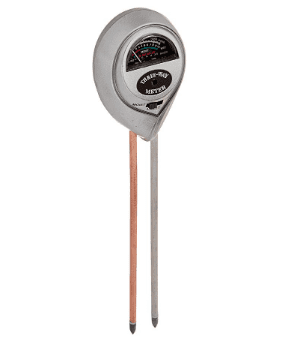Houseplant Basics: Learn more about how to determine indoor light levels and which plants will thrive there.
One of the most important parts of caring for houseplants is giving them the right amount of light. After all, plants convert light into energy, so light is essentially their food! But some plants are hungrier than others.
You’ll find that some plants like to sit right on a bright window sill while others are happier in the corner of a darker room.
When you buy plants at most nurseries, you’ll notice a tag in the soil or sticker on the side that tells you how much light that plant needs, which can range from full sun to partial sun, partial shade, full shade, etc.
But how can you tell how much light your home actually has? How can you pick the best spot for that expensive fiddle leaf fig you fell in love with at your local Plants n’ Stuff?
Here’s how to determine indoor light levels so you can find the perfect location for your houseplant friends.
How to Determine How Much Light You Have | Houseplant Basics
Tip #1: Understand sunlight from different directions.
Think of the sun’s path over a course of a day and how different light looks first thing in the morning vs later in the afternoon.
The sun rises in the east, travels overhead, and sets in the west.
If you live in the northern hemisphere, the sun travels across the southern part of the sky. If you’re in the southern hemisphere, you’ll find the sun towards the north. If you’re near the equator, the sun passes almost directly overhead.
So think about your windows. East-facing windows will catch the morning light while west-facing windows receive afternoon light. South-facing windows will get more direct sunlight all day long if you’re in the northern hemisphere (and the reverse if you’re in the southern).
Also, consider the quality and angle of light. Morning light is much “cooler” and indirect than warm, direct afternoon light.
You might not notice this during the day, but think about photos taken at different times of day. Photos taken in the late afternoon tend to have an orange tint while morning photos are much softer-looking thanks to the blue-toned light. (And midday photos are just blown out and bright and make everyone look awful!)
Windows in a nutshell:
Note: Reverse the north and south for the southern hemisphere
- East facing windows = bright, indirect light
- South and west facing windows = bright, direct sunlight
- North facing windows = lower light
A room with a window where a plant never receives direct sunlight = low light.
And to translate that to what you’ll see on the label on your new plant:
Full sun: right in the window sill
Indirect light: in an east-facing window or near a bright window
Partial shade: in a room with a window, but not right in front of it.
Tip: Bright, direct light for long periods can actually scorch plant leaves and cause dry brown or red spots. Watch out for west facing windows where the angle of afternoon light can be especially direct.
Tip #2: The Shadow Test
To test the light in any indoor or outdoor space, look for your shadow. It’s best to do this around noon when the sun is high and light is at its brightest.
- Is your shadow very dark and well-defined? You’ve got bright light.
- An okay shadow that’s a little bit fuzzy? You’ve got medium light.
- Can you barely see your shadow? You’ve got low light.
Tip #3: The Reading Test
How low is too low for plants?
Basically, if you can’t easily read a book with small print, there isn’t enough light for a plant.
If your space is generally “low light”, don’t worry! There are tons of beautiful shade-loving plants out there for you. You can also purchase grow lights and bulbs to provide more light for plants that prefer brighter light. (We get it, sometimes you just HAVE to have that aloe plant or monstera, even if your home is dark!)
Tip #4: Use a light meter
Yes, you can actually buy a gadget to help with this!
You can find light meters at most nurseries, home improvement stores, and online. We prefer multi-functional tools that measure soil moisture, light, etc.
In fact, we created our own moisture meter/light meter to help you care for your plant with fewer tools! You can grab that meter here.

Understanding the light in your home can help you care for and select houseplants, so it’s one of the first things on your to-do list if you want to turn your home into a jungle (or just get a few plant buddies to add some life to your space).




